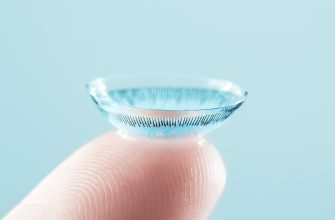
Many people with poor eyesight do not dare to use contact lenses, for fear of possible difficulties and feelings of discomfort.
In their opinion, glasses are more convenient, since they do not require additional skills and special care: they put it on and went.
But, at the same time, glasses are pressed in the bridge of the nose, rubbed behind the ears, misted up in a warm room at the entrance to the frost.
These disadvantages of the lens are deprived and, with some patience, getting used to them will pass without any problems.
The main thing here is to act sensibly and take your time to avoid mistakes and disappointments.
First of all, a beginner needs to carefully study the rules of care for lenses - this will reduce possible inconveniences to a minimum, and with them the risks of eye diseases.
- 1. General rules for the use of
- lenses 2. Care for
- contact lenses 3. Rules for removing
- lenses 4. Rules for dressing
- lenses 5. Conclusion
General rules for wearing lenses
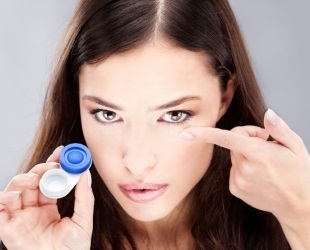
The human eye was notis designed to interact with foreign objects.
With this in mind, the manufacturers are striving to make the lenses as thin as possible, experimenting with the materials so as not to deprive the surface of the eye of the necessary moistening and contact with oxygen.
But a foreign object remains a foreign object and therefore one should remember about the wearing mode, the permissible terms of wearing, and also that not all situations use lenses is acceptable.
Sleep in
lenses Do you sleep in lenses? Maybe that's why you feel discomfort and dry eyes? Do not sleep in lenses, especially if they are wearing your day.
Using prolonged wearing lenses implies the possibility not to shoot them for several days, or even weeks, but it's better not to get carried away. Eyes should rest at least during sleep.
No matter how good the lenses, they prevent the natural moistening of the eye surface, which can lead to dryness, irritation, redness and itching. In addition, the tear fluid serves as a natural barrier against pathogens.
If the eye is not washed in sufficient volume and for a long time, infection may begin.
Contact with water
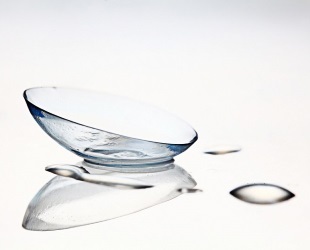
Do not allow eyes to come into contact with water when you are in the lens. Neither swimming, nor showering, nor even simple washing are allowed to you until the correction tools are removed.
There are a lot of microorganisms living in the water, which will only be glad to get into your eyes.
For swimming it is possible to use special tight-fitting glasses, but this is a compromise option. It is best to enter the water without lenses at all.
Dropped to the floor?
The lens that has fallen on the dirty floor is immediately sent to the trash. Few will agree to swallow a piece on the floor for fear of becoming infected or from elementary fastidiousness. Here we are dealing with a much more delicate thing, and in case of further use it is much more dangerous.
You do not have to wash it properly, so it's better to throw it out and get a new one out of the package.
Cracks
Disposal of lenses with shards and cracks. If you feel discomfort when wearing, dryness, burning sensation in the eyes - remove the lens and carefully examine it. In case of defects, replace it with a new one ahead of time.
Care for contact lenses
There is a certain set of requirements, the performance of which is strictly mandatory regardless of the type of lenses used. First of all, we are talking about hygiene rules, but not only about them.
For a day, the lenses are exposed to the environment and, at the same time, the body itself. On them, proteins and fats from the surface of the eye settle, which become a nutrient medium for bacteria. If the lens is not cleaned and not disinfected, then in the future there may be diseases of the eye.
Once a week, lenses( especially "continuous wearing") should be subjected to an enzyme cleaning procedure to remove the adhering protein masses. To do this, in the freshly filled with fresh solution the clean cups of the container should be placed on the cleaning tablet, after which it is possible to remove and wash the lenses, as usual.
After closing the caps, shake the container and leave it there for 15 minutes. After that, take out the lenses, splash out the liquid, rinse the correction tools again and put it into the newly filled container until the next day.
But there are other hazards associated with the use of aerosols, non-recommended eye drops, etc. Remember: during use, the contact lens becomes like a continuation of your eye, and careless handling of it will inevitably affect vision.
Terms of use
Observe the use of lenses. If they are designed for two weeks, it means that they should be thrown out in two weeks. In some cases, it may be necessary to do this before the deadline, but later - never. Be sure to mark the day of the change of the set in the calendar;You can also use the reminder feature on your phone.
Contact with lens
Only use dry, dry hands to touch the lens. It is best to wash them with liquid antibacterial soap and rinse thoroughly. Moisturizing soap is more difficult to wash off and therefore worse: the hands should not contain unnecessary chemicals.
Wipe hands with a clean, lint-free towel. Quite ordinary kitchen or paper disposable napkins and towels are suitable. It is advisable to have near and when donning, to soak wet fingers with a solution.
The fact is that the lens is easier to "jump off" on the surface of the eye from a dry surface, while to wet it sometimes clings itself.
Eye drops
Eye drops are allowed to use only after consultation with an ophthalmologist. Many drops are designed to be applied exclusively to the open surface of the eye and their interaction with the lens material can cause spoilage of the latter.
Therefore, if you feel the need for additional moisturizing, ask the doctor's advice - he will tell you which brand to choose in order to feel comfortable.
Solution and container
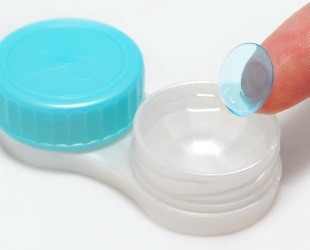
The solution must be replaced daily. Overnight, floating in the liquid, the lens is cleaned of bacteria and protein films.
Return them in the evening to the same "broth" - anyway, that wash several times in one water. Have pity on your eyes, then wear it to them.
Change the container at least once a month. No matter how much it is washed, dirt and microorganisms still accumulate on the walls and eventually make the containers unfit for further use.
The container itself is inexpensive, in addition, some solution manufacturers put a free copy inside the box as a gift, and this is another argument in favor of a timely replacement.
Prevention
Visit the ophthalmologist every six months to check vision and advice on current issues. Regular examinations will reduce the risk of eye diseases and correct the difficulties arising during the wearing process.
Rules for removal of lenses
It is most convenient to wear and remove lenses at a table in front of a small mirror. So you can control your movements, and if the lens jumps off the finger or drops out of the eye, it will be easy to find.
- Train yourself to always start with the same eye( for example, the right one).This will not let you confuse the lenses from different eyes, which is especially important if their eyesight is different.
- Lenses removed from a blister or container are already ready for use and do not need additional manipulation. Check each one for the correct side, and wear it.
- It is extremely important not to forget about washing an empty container. Pour out the solution and rinse with fresh, then put the container bottom up on a clean cloth. By the evening it will be dry, clean and ready for use again.
- Remember that it is necessary to apply various aerosols( in particular hair varnishes or deodorants) before putting on correction means. Otherwise, you risk their irretrievably spoil the sticky particles.
- Apply make-up already with the lenses on. All cosmetics, including eyeliner, should be water-soluble. Carefully ensure that no particles get into your eyes in order to avoid their unpleasant sensations. In addition, it is not recommended to use the same makeup for a long time.
Rules for dressing the lenses
- Fill the containers in advance so that the removed lens can be removed immediately and without unnecessary delay. The less it is in the open air, the better.
- It is strictly forbidden to rinse and store the lens in plain water. For this, there are special solutions, one of which will help you to choose an ophthalmologist. These fluids have disinfecting properties, while ordinary water not only does not kill microorganisms, but it itself is teeming with them.
- Remove the lent lens from both sides with a solution and rub it gently with your finger for 10 seconds. Accuracy of the mechanical effect is very important here, since it is an eye contacting surface. It is necessary to clean out protein accumulations, without damaging the correction tool.
- Place a clean lens in the container and immediately screw the lid to avoid accidental dust ingress from the air, then proceed to remove the next one.
The following picture shows the main points that should be observed with proper care of lenses:
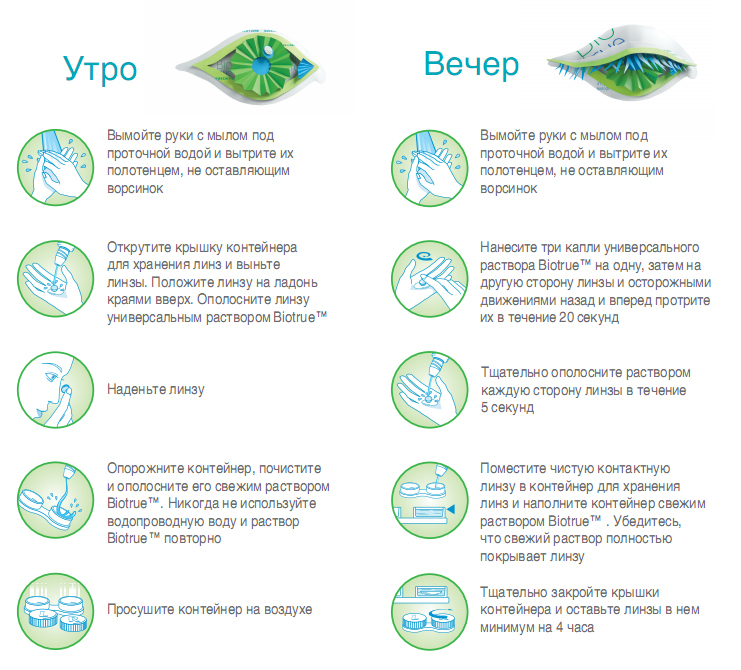
Conclusion
Regardless of the type of contact lenses, the rules for caring for them are the same. Varying can be individual items: for example, if you have one-day lenses, then the need for a container and solution disappears by itself. But hygiene requirements, as well as many others, have not been canceled.
The main thing that you should always remember about is cleanliness above all else. And it's not just about the purity of the corrective means, but also the hands and the container. What is the point of cleaning the lens, if after that they get into a dirty container? Dirt and bacteria will accumulate on them again, and in the morning all this will be before your eyes.
Never use worn-out lenses, even if in appearance they are normal. It is not necessary to save on vision, it is fraught with large overpayments in the future, when the eyes will require treatment. The same applies to cleaning equipment and containers: after expiry date, they are to be sent to the trash.
Rinse and disinfect the lens daily, this will reduce the risk of infection and irritation. And finally, visit the ophthalmologist on a regular basis: additional control will never hurt, especially in such an important matter as vision.
